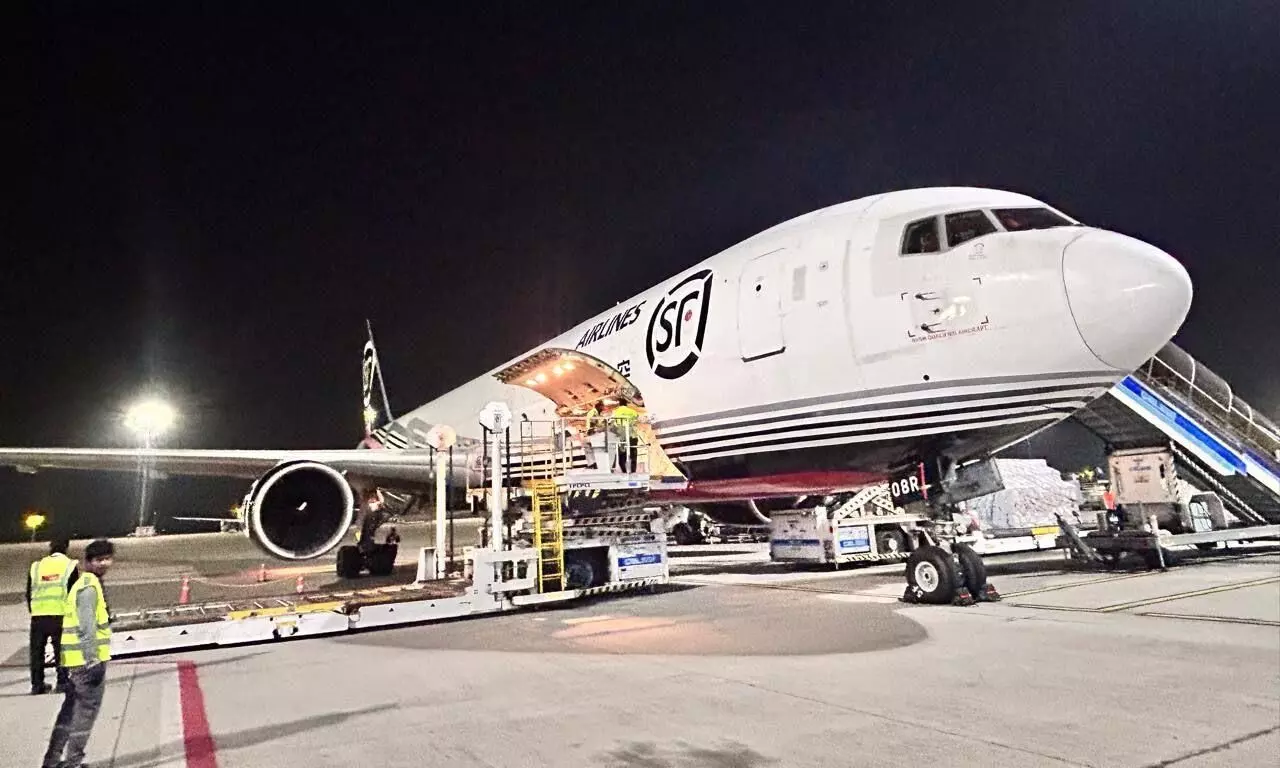
BCAS ends re-screening, eases cargo transfer at Indian airports
BCAS has issued a comprehensive set of security guidelines governing the handling of transfer cargo and mail at Indian airports.

India has permitted the transfer of cargo without the need for re-screening at transfer airports. The Bureau of Civil Aviation Security (BCAS), under the Ministry of Civil Aviation, has revised its security guidelines to ease cargo movement at transfer airports.
BCAS has issued a comprehensive set of security guidelines governing the handling of transfer cargo and mail at Indian airports.
Issued as Addendum–II to AVSEC Circular No. 6/2024, the directive standardises procedures for four types of transfer shipments: International to International (I–I), International to Domestic (I–D), Domestic to International (D–I), and Domestic to Domestic (D–D).
The circular, released under the powers conferred by the Aircraft (Security) Rules, 2023, aims to prevent unauthorised interference and enhance the safety of aviation operations across India.
Airlines have repeatedly flagged re-screening of cargo at transfer airports as a major obstacle, slowing down shipments, adding costs, and undermining India’s position as a regional transshipment hub.
The directive requires all transfer cargo and mail to be processed through a Transfer Cargo Security Hold Area (TCSHA), which is a dedicated space at the security-restricted zone of an airport, approved by the Director General of BCAS.
These areas must be operated by either a regulated agent or an airline’s own self-handling facility and are subject to strict surveillance, access control, and staffing protocols.
TCSHAs are required to be equipped with controlled entry/exit points, screening facilities for personnel, sufficient space for storage and unitisation, and round-the-clock CCTV coverage. Visual or electronic surveillance must be maintained at all times during cargo dwell. Escort by authorised security personnel is mandatory for movement between aircraft and TCSHA.
This addendum shall come into effect immediately. However, the existing procedure for transfer of cargo and mail as per extant norms shall be continued for a period of three months from the date of issuance of this order to enable regulated agents and the approved self-handling facility of the aircraft operator to develop TCSHA.
BCAS has laid down distinct protocols for each type of cargo movement, detailed in clause 5.1 of the circular.
1. International to International (I–I):
- Allowed without re-screening only if cargo is secured at origin, transported in ‘Through ULDs’, and originates from countries whose security systems India recognises (Clause 5.1.1).
- Cargo must never be stored on the apron and must be transferred directly to the Transfer Cargo Security Hold Area (TCSHA) under physical escort (Clause 5.1.1.7–5.1.1.8).
2. International to Domestic (I–D):
- Similar rules as I–I: cargo must be secured at origin and handled under escort.
- At the transfer airport, cargo must be sorted and stored at the TCSHA
- It also mentions that ULDs of domestic transfer cargo and mail shall be prepared at the TCSHA under the supervision of the security staff of the Regulated Agent (Clause 5.1.2.6).
3. Domestic to International (D–I):
- Cargo must originate from approved regulated agents or airline self-handling facilities (Clause 5.1.3.3).
- ULDs for international legs must be prepared at the TCSHA, and all movements must be escorted by trained security staff (Clause 5.1.3.4).
4. Domestic to Domestic (D–D):
- Tail-to-tail transfer is permitted only if the dwell time is less than two hours (Clause 5.1.4.6).
- If cargo stays longer, it must be moved to a TCSHA for storage and further transfer.
- All such cargo must be verified for security stickers, documentation, and seal integrity (Clause 5.1.4.7).
When re-screening is still mandatory
- While most transfer cargo can now bypass re-screening, it remains mandatory in the following situations:
- Missing or tampered security seals or documentation (Clauses 6.5.4 and 7.4)
- Cargo inspected by government agencies or customs (Clause 7.13)
- Transfer from all-cargo to passenger aircraft (Clause 7.14)
- Random rescreening: 2% of domestic-origin and 5% of international-origin shipments will be checked (Clause 7.12)
- High-risk cargo showing signs of tampering or unauthorized access (Clause 7.10)
- It further says that the aircraft operator must also visually inspect all transfer cargo before acceptance (Clause 7.15).
Tail-to-tail cargo is allowed with a two-hour limit
BCAS has formally allowed tail-to-tail transfer, direct movement from one aircraft to another, without TCSHA involvement, but only if the transfer, including transit time, is completed within two hours (Clause 5.1.4.6). Security escort, document verification, and seal integrity checks are mandatory, and full records must be maintained by the airline (Clause 5.1.4.7).
A big win for Indian air cargo and a loss for screeners
This policy overhaul is expected to cut delays, reduce costs, and increase throughput at major Indian airports, especially for international transshipment. Re-screening had long been a thorn in the side of airlines and freight forwarders, slowing down what is meant to be a fast-moving mode of transport. With this step, India moves closer to its ambition of becoming a global air cargo hub.
However, the change could impact revenues for ground handling agents and screening companies, who previously benefited from mandatory re-screening procedures.
The move follows sustained lobbying from cargo operators, integrators, and trade associations and aligns with the Ministry of Civil Aviation’s broader goal of streamlining cargo logistics.
In a recent interview with The STAT Trade Times, Mark Sutch, Head of International Development and Chief Commercial Officer – Cargo at IndiGo, reiterated the importance of regulatory interventions for India to be a formidable player in the global air cargo market.
“Regulatory consistency is critical for shippers. Differences in how customs rules are interpreted at different airports often push exporters and forwarders to favour certain gateways over others, making the system uneven,” he said. “Without more uniform processes and clearer rules, India risks underutilising its growing airport infrastructure and its expanding fleet capacity,” he added.

